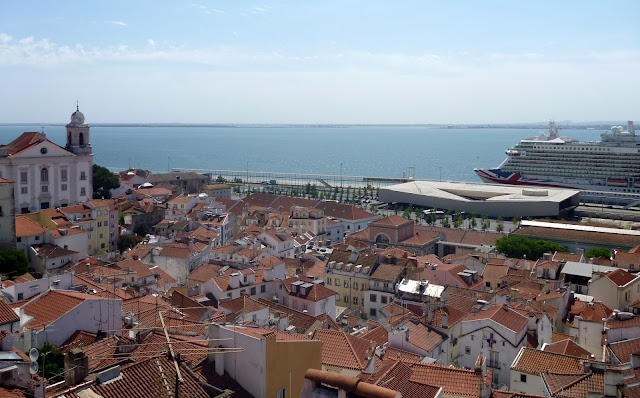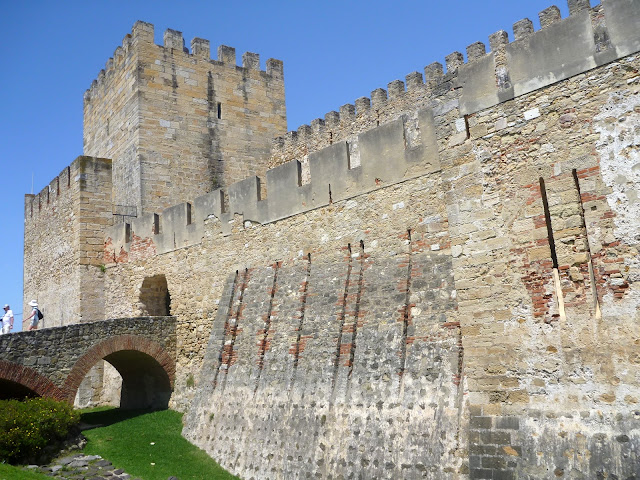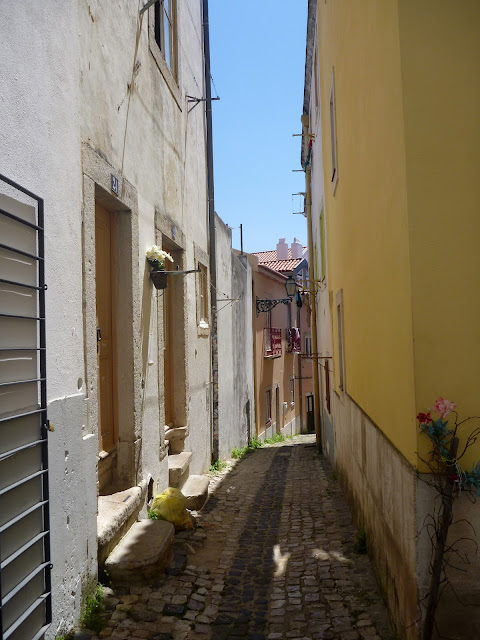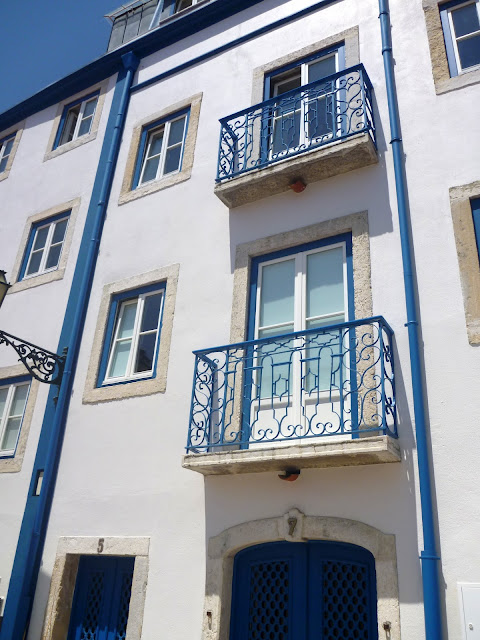
We walked east of the Baxia on our way to visit the remains of Castelo de Sao Jorge, the castle that towers over the city.
Our first stop was the Se, Lisbon's main catheral, founded in 1150 to commemorate the city's Reconquest from the Moors on the site of their mosque. It's a Romanesque structure with a suitably fortress-like appearane.
The great rose window and twin towers form a single and effective facade, although there's nothing particularly exciting inside: the building was once splendidly embellished on the orders of Dom Jao V, but his Rococo whims were swept away by the 1755 earthquake and subsequent restorers.
The way to the castle was uphill all the way, even though we had taken the easiest route, as advised by the taxi driver who took us from the airport to our hotel.
One of the things that fascinated me in Lisbon were the ancient trees with their thick, bulbous, contorted trunks and this is one of them.
We arrived at Largo de Santa Luzia, a bustling square
that afforded great views of the city and the river
including this monstrous cruise ship
We continued on our way, always uphill, through narrow winding streets, the traffic building up as we neared the castle
which finally came into view.
We enjoyed our time inside the castle and then we decided to visit the district of Santa Cruz which is crammed within the castle's outer walls. This remains a village in its own right, with its own school, bathhouse and church.
and small shops, including the cork store

where everything is made out of cork, a sustainable alternative to leather
and noticed these images outside many of the houses. Previous owners?
but most are small dwellings
and some have beautiful tiles on the outside
We ended up back at the Largo de Santa Luzia and we sat here, at the edge of the hill, had a drink
and admired the view
After about an hour, we decided it was time to head back.
We couldn't believe our luck when a no. 28 tram, which was relatively empty, came by. The no. 28 tram is one of the city's greatest rides, though its popularity is such that there are usually queues to get on and standing-room only is more than likely. Built in England in the early 20th century, the trams are all polished wood and chrome but give a distinctly rough ride up and down Lisbon's steepest streets, at times coming so close to buildings that you could almost touch them.
We obviously took this opportunity and enjoyed our ride.































No comments:
Post a Comment